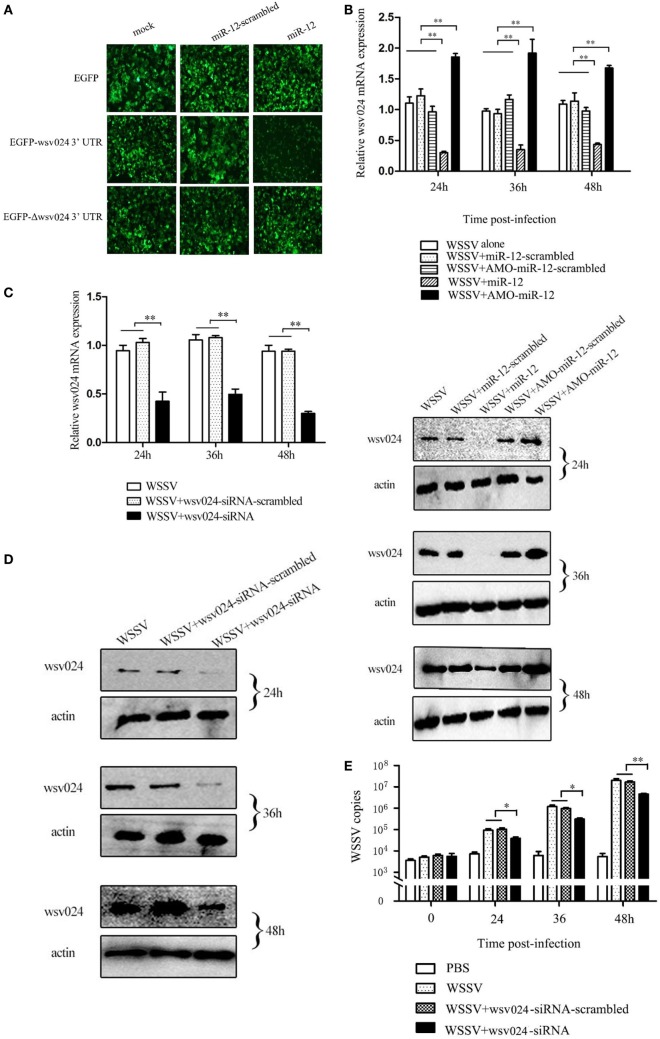Figure 2.
The miR-12-mediated suppression of white spot syndrome virus (WSSV) infection in shrimp by targeting viral wsv024 gene. (A) The direct interaction between miR-12 and wsv024. Insect High Five cells were co-transfected with miR-12 or miR-12-mimic-scrambled with the recombinant plasmids, including EGFP-wsv024-3′UTR, EGFP-Δwsv024-3′UTR, and EGFP. At 48 h after co-transfection, fluorescent images were obtained. (B) The effect of the silencing or overexpression of miR-12 on wsv024 expression in WSSV-infected shrimp. The shrimp were injected with miR-12 and WSSV, AMO-miR-12 and WSSV or WSSV alone. As controls, miR-12-scrambled and AMO-miR-12-scrambled were also injected. At different times after injection, shrimp hemocytes were subjected to quantitative real-time PCR (up) and western blotting (down) to evaluate the wsv024 expression level. The numbers indicated the times postinfection. Shrimp β-actin was used as a control. (C) The knockdown of wsv024 gene expression in shrimp. Shrimp were co-injected with WSSV and wsv024-siRNA. As controls, co-injections of WSSV + wsv024-siRNA-scrambled or WSSV alone were included in the assays. At different times postinfection, the wsv024 mRNA level was determined using quantitative real-time PCR. (D) Western blot analysis of wsv024 silencing in shrimp. The numbers indicate the time points postinfection. (E) The effects of wsv024 silencing on virus infection. At different times postinfection, the WSSV copies in the wsv024-siRNA-treated shrimp were examined using quantitative real-time PCR. The statistically significant differences between treatments are represented with asterisks (*p < 0.05; **p < 0.01).

